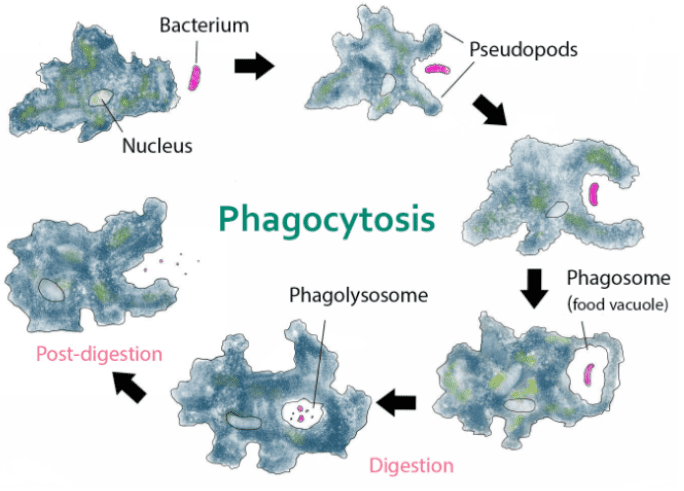Nutrition in Animals Class 7 Extra Questions and Answers Free PDF Download
FAQs on CBSE Important Questions for Class 7 Science Nutrition in Animals - 2025-26
1. Which topics from Chapter 2, Nutrition in Animals, are most frequently asked in Class 7 exams?
For the CBSE Class 7 Science exam, the most important topics from Chapter 2 are the human digestive system, the function of villi in the small intestine, digestion in ruminants (grass-eating animals), and the unique mode of nutrition in Amoeba. Questions often test the roles of different organs like the stomach and liver, and the functions of digestive juices.
2. What are villi and what is their function in the digestive system? Why are they considered important?
Villi are tiny, finger-like projections found on the inner walls of the small intestine. Their primary function is to increase the surface area for the absorption of digested food. This large surface area allows for much more efficient transfer of nutrients into the bloodstream. They are vital because, without them, the body would not be able to absorb enough nutrients from the food we eat.
3. Explain the complete journey of food through the human alimentary canal. How would you answer this for a 5-mark question?
For a 5-mark question, you should describe the path of food step-by-step, mentioning the key processes in each organ. The journey is as follows:
- Mouth (Buccal Cavity): Food is taken in (ingestion), chewed, and mixed with saliva, which begins starch digestion.
- Oesophagus (Food Pipe): The swallowed food moves down to the stomach.
- Stomach: The food is churned and mixed with digestive juices and acid. Protein digestion starts here.
- Small Intestine: Receives juices from the liver (bile) and pancreas. Digestion is completed here, and the final nutrients are absorbed by villi.
- Large Intestine: Absorbs water and some salts from the undigested food.
- Rectum and Anus: The remaining waste (faeces) is stored in the rectum and removed from the body through the anus (egestion).
4. Why can ruminants like cows digest cellulose-rich food like grass, while humans cannot?
This is a key conceptual question. Ruminants can digest cellulose because they have a large, sac-like structure called the rumen between the oesophagus and the small intestine. The rumen contains specific bacteria that produce enzymes capable of breaking down cellulose. Humans lack this structure and the necessary cellulose-digesting bacteria in their digestive system, making it impossible for us to digest grass.
5. What would be the impact on digestion if the liver failed to secrete bile juice?
Bile juice, produced by the liver and stored in the gall bladder, plays a crucial role in the digestion of fats. It breaks down large fat globules into smaller droplets, a process called emulsification. This increases the surface area for enzymes to act upon. If the liver failed to secrete bile, the digestion of fats would be severely impaired, leading to difficulty in absorbing fat-soluble vitamins and fatty acids.
6. Describe the process of feeding and digestion in Amoeba.
Amoeba is a single-celled organism with a unique feeding method. The process is as follows:
- Ingestion: When Amoeba senses food, it pushes out finger-like projections called pseudopodia (false feet) to engulf the food particle.
- Digestion: The pseudopodia fuse around the food particle, forming a food vacuole. Digestive juices are secreted into this vacuole to break down the food into simpler substances.
- Absorption and Assimilation: The digested nutrients are absorbed directly into the cytoplasm and used for growth and energy.
- Egestion: The undigested waste is expelled from the cell by the vacuole moving to the surface and rupturing.
7. What are the final, simple products formed after the complete digestion of carbohydrates, proteins, and fats?
For the body to absorb nutrients, complex food components must be broken down into their simplest forms. The final products are:
- Carbohydrates are broken down into simple sugars like glucose.
- Proteins are broken down into amino acids.
- Fats are broken down into fatty acids and glycerol.
8. Why is it scientifically important to chew food properly before swallowing?
Chewing food properly is important for two main reasons. Firstly, it is a form of mechanical digestion that breaks food into smaller pieces, increasing the surface area for digestive enzymes to work on. Secondly, chewing allows food to mix thoroughly with saliva. Saliva contains an enzyme called amylase, which begins the chemical digestion of carbohydrates (starch) right in the mouth. Incomplete chewing makes the entire digestive process less efficient.
9. Differentiate between absorption and assimilation as they occur in the human body.
Although they are related, absorption and assimilation are two distinct processes. Absorption is the process where the digested, soluble food nutrients pass from the small intestine into the blood vessels. Assimilation is the next step, where the absorbed nutrients are transported by the blood to different organs of the body and are used to build complex substances such as proteins required by the body for growth and repair.

























